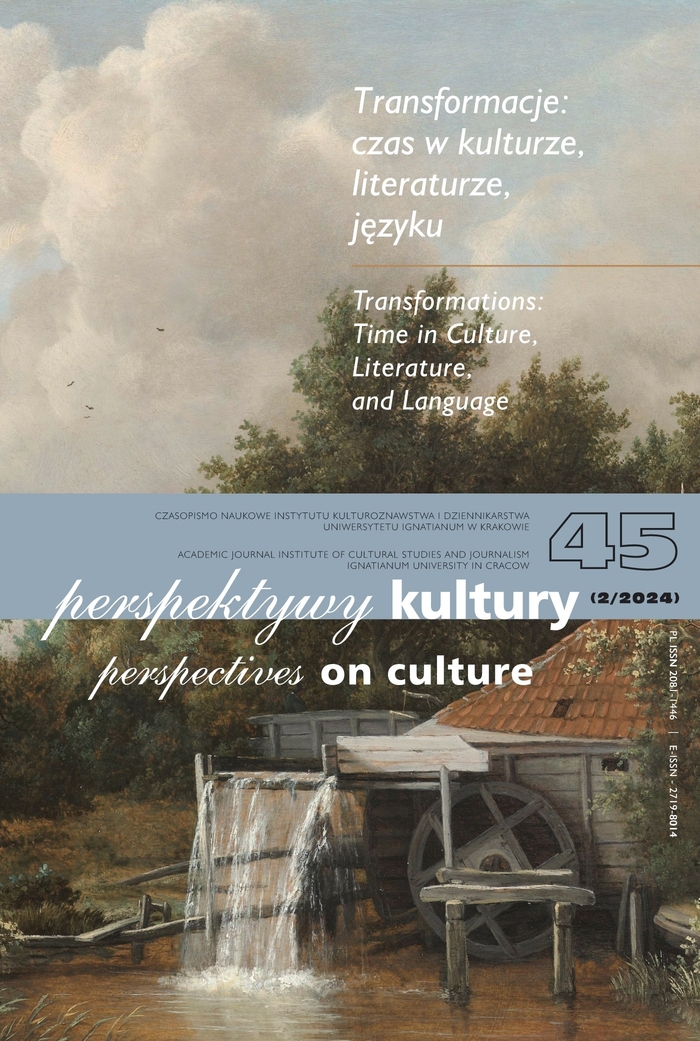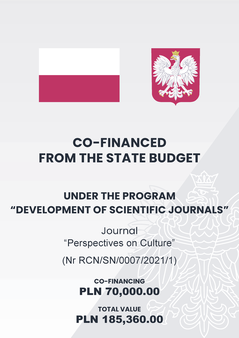Time and Transformation in Autobiography
Candia McWilliam’s What to Look for in Winter: A Memoir in Blindness
Abstract
In this article, I discuss transformations of self over time in Candia McWilliam’s memoir What to Look for in Winter. In this book, the author writes about many life-changing events: her mother’s suicide, her two failed marriages, her alcoholism and her blindness, to name only a few. However, the book itself constitutes an attempt at transforming these experiences in the act of writing, to offer restitution to a life gone awry. Time plays a major role in this endeavour, both in the story told and in the way it is told. Anchored primarily in two ‘present’ moments in the first and second halves of the book, the narrative moves back and forth in time, taking the reader on a painful journey through the author’s past. Time furthermore serves as an overarching metaphor for transformations especially due to illness, as can already be seen in the book title’s reference to the seasons. What emerges is a highly complex literary autobiography in which life storytelling meshes with metanarrative reflection.
References
Abbott, P. (1988). Autobiography, autography, fiction: Groundwork for a taxonomy of textual categories. New Literary History, 19(3), 597–615.
Andrews, M. (2014). Narrative Imagination and Everyday Life. Oxford: Oxford University Press.
Bakhtin, M.M. (1981[1934–1935]). Discourse and the novel. In: M. Holquist (ed.), C. Emerson and M. Holquist (transl.), The Dialogic Imagination: Four Essays by M.M. Bakhtin. Austin: University of Texas Press, 259–422.
Brockmeier, J. (2022). Erzählen als Lebensform: Ernst-E.-Boesch-Preis für Kulturpsychologie 2021. Gießen: Psychosozialverlag.
Eakin, P.J. (2008). Living Autobiographically: How We Create Identity in Narrative. Ithaca: Cornell University Press.
Freeman, M. (2010). Hindsight: The Promise and Peril of Looking Backward. Oxford: Oxford University Press.
Herman, D. (2009). Basic Elements of Narrative. Chichester: Wiley Blackwell. Kafka, F. (1990). Tagebücher in der Fassung der Handschrift, eds. H.-G. Koch, M. Müller, & M. Pasley. Frankfurt a.M.: Fischer.
McWilliam, C. (2010). What to Look for in Winter: A Memoir in Blindness. London: Vintage Books.
Mildorf, J. (2023). Life Storying in Oral History: Fictional Contamination and Literary Complexity. Berlin: De Gruyter.
Morson, G.S. (1994). Narrative and Freedom: The Shadows of Time. New Haven: Yale University Press.
Pike, K. (1976). Time in autobiography. Comparative Literature, 28(4), 326–342.
Smith, S. & Watson, J. (2010). Reading Autobiography: A Guide for Interpreting
Life Narratives. 2nd ed. Minneapolis: University of Minnesota Press.
Thomä, D. (1998). Erzähle dich selbst: Lebensgeschichte als philosophisches Problem. Frankfurt a.M.: Suhrkamp.
Wojciechowska, S.J. (2023). Nost/algia as a Mode of Reflection in the Autobiographical Narratives of Joseph Conrad and Henry James. Lausanne: Peter Lang.
Copyright (c) 2024 Perspectives on Culture

This work is licensed under a Creative Commons Attribution 4.0 International License.
Autor, zgłaszając swój artykuł, wyraża zgodę na korzystanie przez Wydawnictwo Uniwersystet Ignatianum z utworu na następujących polach eksploatacji:
- utrwalania utworu w formie papierowej, a także na nośniku cyfrowym lub magnetycznym;
- zwielokrotnienia utworu dowolną techniką, bez ograniczenia ilości wydań i liczby egzemplarzy;
- rozpowszechniania utworu i jego zwielokrotnionych egzemplarzy na jakimkolwiek nośniku, w tym wprowadzenia do obrotu, sprzedaży, użyczenia, najmu;
- wprowadzenia utworu do pamięci komputera;
- rozpowszechniania utworu w sieciach informatycznych, w tym w sieci Internet;
- publicznego wykonania, wystawienia, wyświetlenia, odtworzenia oraz nadawania i reemitowania, a także publicznego udostępniania utworu w taki sposób, aby każdy mógł mieć do niego dostęp w miejscu i czasie przez siebie wybranym.
Wydawca zobowiązuje się szanować osobiste prawa autorskie do utworu.






